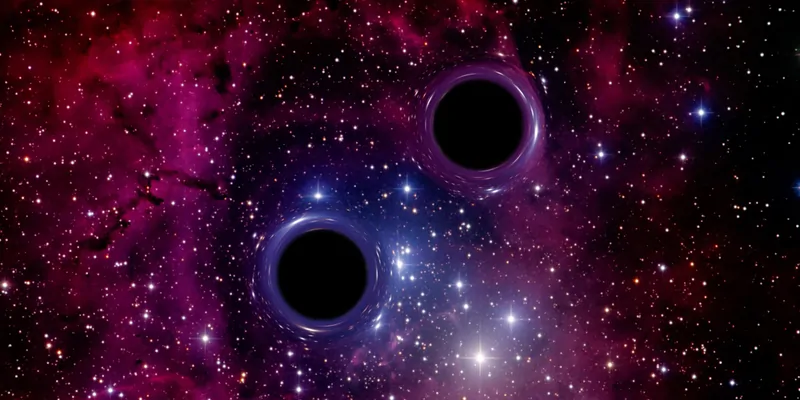These two supermassive black holes are the closest to a gigantic collision

Astronomers have, for the first time, observed two gigantic black holes on the verge of collision. Although very slow, this powerful shock teaches us more about these cosmic objects.
Always shrouded in mystery , black holes are still the subject of many questions in astronomy today. According to some researchers, these may even cause the future “big crush”.
?The merger of black holes, future “big crush”
This theory in astronomy supposes that the universe, once extended to the maximum, will have created so much vacuum, that the whole world will shrink instantaneously, sucked by the black holes to finally form a single core. This will then be at the origin of a new big bang which will then form a new universe.
Perhaps this collision of supermassive black holes is the harbinger? It is in any case the first time since the observations of these cosmic monsters that two gigantic black holes are so close. The countdown begins.
The information was disclosed on January 9 at the American Astronomical Society open in Seattle.

A short distance
Indeed, according to the researchers who published a detailed article on this subject in "The Astrophysical Journal letters", the two black holes are 750 light years from each other . A good distance certainly, but which does not had never been observed before. According to recent observations, black holes will not merge for a few hundred million years.
This short distance between the cosmic monsters "is pretty close to the limit of what we can detect, which is why it's so exciting ," says Chiara Mingarelli, co-author of the study and associate researcher at the Center for Computational Astrophysics. from the Flatiron Institute in New York.
Gravitational waves from the shock
In addition, this count before the collision will make it possible to know directly where to look to observe the gravitational waves emitted by the fusion! These could be crucial in order to know the number of galaxies that have already collided or that have previously merged.
According to the researchers, these two black holes, located 480 million light-years from Earth, met when their respective "host galaxy" merged . Weighing in at around 200 million solar masses, they feed on gas, dust and stars left over from the merger of their galaxy.
Source: websites

